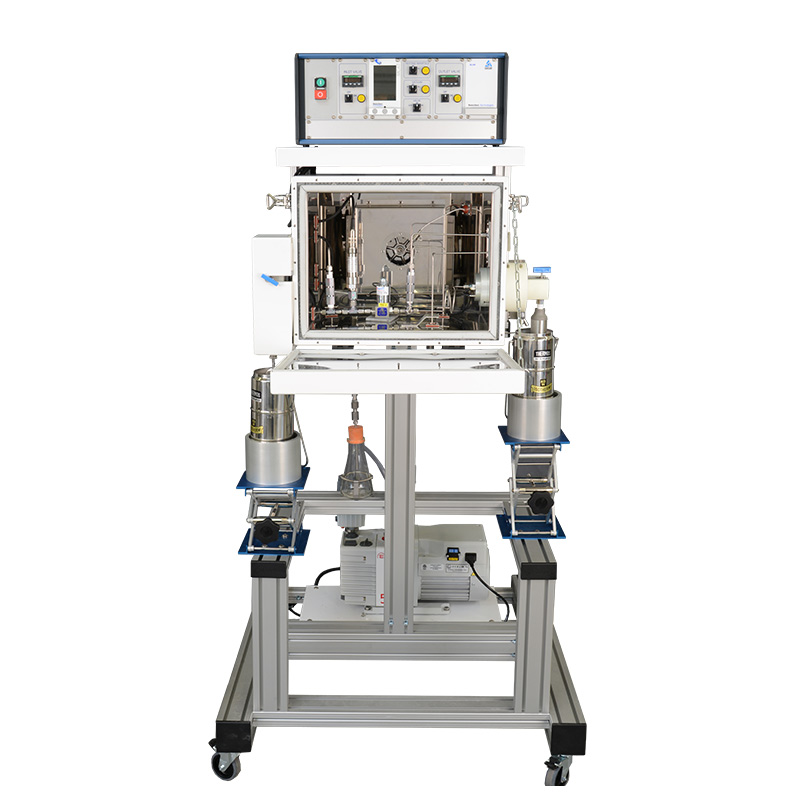Cryogenic Distillation Unit
The Mk 4 Sulfinert™ Treated Cryogenic Distillation Unit (Mk 4 Cryogenic Unit) is a mobile piece of equipment designed to allow the distillation of a pressurised single phase hydrocarbon reservoir fluid into a gas phase and a liquid phase, which are in a state suitable for direct chromatographic composition analysis.
Documentation
The Cryogenic Distillation unit is better for the distillation of volatile oils, condensates & gas systems. The Cryogenic unit can often isolate a residual liquid from a rich gas system, which aids characterization of the heavy-end of the composition. This is because, instead of the heavy-ends being a small portion of the tail of an extended gas analysis, it can be separately chromatographically, analyzed as a liquid alongside the extended gas analysis of the gas phase.
An important feature of the instrument is that the flow path components have been Sulfinert™ treated apart from the pressure transducer. The SulfinertTM treatment reduces losses of Sulphur species due to absorption into the Stainless steel pipe work and components.
The Mk4 electronics and plumbing are separated, each having their own enclosures. The enclosures are mounted on a mobile stand, along with the Vacuum pump. Two lab jacks are built into the Frame. These lab jacks allow the operator to raise and lower the supplied Dewar flasks as required.
After evacuation of the whole Cryogenic Unit system, a quantity of hydrocarbon material is transferred from a PVT cell or storage cylinder, at pressure, into a glass flask cooled in a Dewar flask of liquid nitrogen. The fluid is transferred through tubing which may be heat-traced using a temperature controller and solid state relay driven trace-heating power outlet built into the Cryogenic Unit. The heat tracing controller takes its input from a sensor. The fluid is isolated from, or throttled into, the cryogenic glass flask via an Inlet Valve attached to a bulkhead inlet fitting. To prevent wax dropout and J-T cooling, the valve and bulkhead are mounted onto a heated aluminum block inside an enclosure. The block is heated with a heater cartridge, its temperature measured with a probe and the process controlled by a temperature controller driving a solid state relay.
Once a portion of hydrocarbon fluid has been transferred and frozen, the Inlet Valve is isolated and the system readied for the distillation process. The distillation process involves allowing the cryogenic glass flask to slowly warm, which immediately causes a pressure build-up in the flask from the initial near-vacuum condition. Once the pressure approaches a threshold set on the pressure controller (typically 250 mbar), the controller will open a proportionate electromagnetic valve inside the Cryogenic Unit. When the valve is open, gas is allowed to pass from the cryogenic flask to a single-ended 75cc cylinder. The cylinder is pre-cooled in liquid nitrogen, so gas passing into it will condense, generating virtually no pressure. So in essence, the instrument generates gas at low pressure and then the instrument acts like a vacuum to receive the gas. The pressure controller will attempt to maintain the system pressure at the pressure set point throughout the distillation process. The gas and liquid can then be transfer to a chromatographic instrument for further analysis.

